For more than 20 years, Art Metal in Toronto has been recognized as the top provider of custom wrought iron fences across Toronto and the GTA. Specializing in the design and creation of unique fences, we enhance the safety and aesthetics of your property boundaries. Our exceptional craftsmanship, reflected in our notable 4.9-star Google rating, encourages you to discover the superior quality of our wrought iron fences firsthand!
Order Wrought Iron Fences in Toronto
Beautiful and Affordable Wrought Iron Fence in Toronto, GTA

Avail quality iron fence from an award-winning company, now!
Art Metal Workshop, Inc. is an award-winning company that caters to your fences, gates, and railing requirements. We only use high-quality materials for our products; thus, you can expect only the finest craftsmanship delivered to your doorstep. We offer different designs and patterns suited to your liking. Plus, we can also do customized orders, so we can help your dream design come into life!
At Art Metal, we provide beautiful and affordable wrought iron fences in Toronto, GTA, and nearby areas. Aside from wrought iron, we also have fences made of steel, metal, and aluminum with various looks to choose from!
For your fence requirements, choose the company that has been in the industry for years. Choose the fence supplier with an untarnished reputation, employs highly-skilled personnel, and loyal customers who will attest to the company’s topnotch work of art.
Need we say more? Just choose Art Metal for your next fencing project!
Why You Should Install Metal Fence in Your Property
Wrought iron fences are popular among homeowners. With its classic and elegant appearance, it can suit any types of homes. It also comes in a variety of designs that –can add appeal to a plain-looking driveway, garden, lawn, and many more.
Aside from providing aesthetical value to a property, it can also ensure security to the property owners. Wrought iron fences are among the sturdiest types of fences in terms of wear-and-tear resistance.
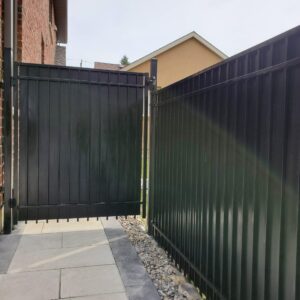
Custom Iron Fence Toronto by Art Metal
At Art Metal, we specialize in crafting custom iron fences that not only add a touch of elegance to your property but also provide security and durability. Here’s what sets our custom iron fences apart:
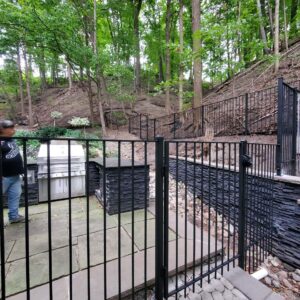
- Tailored to Your Vision: We create custom iron fences that align with your unique style and preferences. Whether you prefer a classic or a contemporary design, we can bring your vision to life.
- Versatile Design: Our team works with a variety of iron finishes, styles, and decorative elements to match or contrast with your property’s existing aesthetic.
- Security and Durability: Our iron fences are crafted with high-quality materials, ensuring both security and durability.
- Clear Views: While providing security, our iron fences also offer clear views of your surroundings.
- Low Maintenance: Our iron fences are designed for easy upkeep, requiring minimal maintenance over the years.
- Professional Installation: We prioritize precision and security during the installation process. Our experienced team ensures that the custom iron fence is installed securely.
Art Metal’s custom iron fences can enhance the curb appeal and security of your home, office, or commercial space, turning your ideas into a beautiful reality. We take pride in our high-quality craftsmanship and commitment to customer satisfaction, making us a trusted choice for elevating the aesthetics and security of your property!
[widget id=”nav_menu-9″]
Wrought Iron Fence Design Ideas
Reasons to Install a Wrought Iron Fence in Toronto
Are you trying to choose the perfect fence for your home? A wrought iron fence would definitely be an amazing choice as it’s not only beautiful but also extremely durable and cost-efficient. You won’t regret installing this particular type of fencing as even your grandchildren will be able to marvel at its beauty.
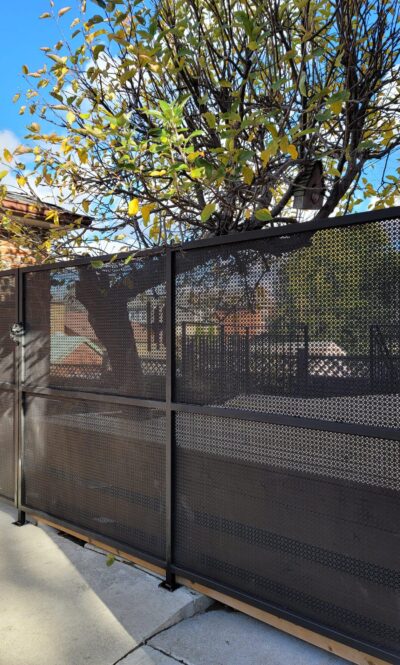
Wrought Iron Fences: Benefits
Wrought iron fences have existed for thousands of years. It’s a proven fact that people have used this variety of iron in particular as far back as 2000 BC. The Victorian era was one of the periods when these constructions were incredibly popular, which we can still see as the majority of Victorian houses have wrought iron fences, gates, and railings. Today, Art Metal Workshop can help you install an elegant wrought iron fence just like this on your Toronto property.
This durability and ability to remain beautiful for decades is the most important benefit of wrought iron fences. The main reason to install one of those on your property is that it’s a one-time investment that will keep your home secure and enhance its curb appeal for many, many years to come.
Think of the added benefits that come with enhancing your property with such valuable items. They will include the increased selling price if you decide to sell, and the overall reduced property maintenance cost. The latter happens because even the most beautiful and elaborate wrought iron fence requires very little maintenance.
Why Choose Art Metal For Wrought Iron Fence?

Choose Art Metal for top-notch installation of wrought iron fences in Toronto. Renowned for our superior craftsmanship, wide range of customization options, and unparalleled customer service, we stand as leaders in enhancing the safety and aesthetics of your property boundaries. Reach out to us to enhance your property with our exceptional wrought iron fence solutions!
- Completed over 12,000 successful projects throughout the GTA.
- Consistently ranked #1 on Homestars.com from 2010 to 2025.
- Committed to serving Toronto and the GTA with over two decades of expertise.
- Featured on numerous well-known home improvement TV shows.
- We offer a lifetime warranty and provide a complimentary estimate.
Google Reviews From Google
What Is The Cost Of A Wrought Iron Fence In Toronto?
The cost of a wrought iron fence in Toronto starts at about $25 to $30 per linear foot. However, the final price may vary based on factors such as the design complexity, height, length, additional features, and installation location. For a precise estimate, it’s best to consult with local contractors or suppliers in Toronto.
Cast iron is made when the iron is melted and poured into a mold. It’s more brittle but highly malleable and cheaper than wrought iron.
Wrought Iron Vs. Cast Iron Fence: What’s the Difference?
People often confuse wrought and cast iron fences, which can cause some issues when shopping for the best fencing. The difference between these material varieties lies in the way they are forms. Wrought iron is made by heating up an iron rod and working it with different tools. This increases the strength of the material greatly.
Cast iron is made when the iron is melted and poured into a mold. It’s more brittle but highly malleable and cheaper than wrought iron.
Most Amazing Wrought Iron Fencing Designs in Toronto
One of the best things about wrought iron fencing is that it can be a true work of art. Its traditional color is black, but the construction can be painted anyway you like. Wrought iron fence ornaments can be extremely elaborate, which allows creating truly beautiful pieces that fit gothic and other artistic styles. Our wrought iron specialists have many years of experience in creating magnificent wrought iron constructions, which allows Art Metal Workshop to provide our clients with the most amazing fencing and gates that enhance the look and value of their properties.

Simple Tips in Caring for Your Wrought Iron Fence
Aluminum as a material has replaced wrought iron fence because it’s lighter, more malleable, and almost maintenance-free. In terms of cost, wrought iron is also more expensive compared to aluminum, although in some areas, it’s more costly to ship aluminum than steel. Nevertheless, wrought iron is a tested commodity and, if property cared for, it will last you more than a lifetime.
On average, a wrought iron fence will last about 50-60 years so when you consider the initial cost of having it fabricated, you would have gotten the returns of your investment many times over during that span. So to say that the wrought iron fence is expensive is relative. It’s a good investment, and so is aluminum, but it depends on the contractor you work with.
In the hands of the expert fabricator, you will have a wrought iron fence that is not only elegant-looking, polished, and be the envy of neighbors. Not only that, the material will be properly treated to delay the onset of rust and corrosion, which will further extend the lifespan of your fence.
The History of the Wrought Iron
Wrought iron and cast iron are sometimes used interchangeably, but they are quite different in composition. Cast iron has carbon composition of between 2.1% and 4% compared to wrought iron which contains 0.08% of carbon.
The invention of cast iron has been traced to China during the 5th Century BC. China has been a trailblazer in using it in warfare. But that doesn’t discount the fact that it could have been used much earlier except there’s no archeological proof to support that thesis. By the 15th Century, it’s been widely used in England and France in producing weapons during the Reformation period.
Wrought iron came much, much earlier. In fact, documentation and evidence found some fragments of wrought iron in 202 BC, also in China.
Cast Iron Vs. Wrought Iron
Compared to wrought iron, cast iron is a very stiff material. It can’t be bent or curved so the design choices are limited. It’s also quite brittle because for all intents and purposes—and despite its name—cast iron is actually classified as an alloy.
In contrast, wrought iron is a popular material for fencing because it’s quite malleable and very durable.
Two Types Of Wrought Iron:
Puddled Iron – This is manufactured from cast iron, heated by a coal-fired furnace, and is a very popular method during the contemporary industrial era.
Charcoal Iron – This used to be the method employed by blacksmiths starting in the Iron Age until the 18th Century.
When you say cast iron, alloy liquid is poured into a mold to assume its final shape. Wrought iron, meanwhile, entails the stretching and the shaping of the metal into its final form. During the process, heat and force are applied onto the material, which makes it very tough indeed.
Advantages of Choosing Wrought Iron Fence
- Toughness – As far as materials go, there’s no comparison between iron and aluminum. While aluminum is also durable, it’s not in the league with wrought iron. Aluminum is perfect for residential use and probably some commercial applications, but if you are thinking about security and toughness you go for iron. For instance, an iron fence will only shrug at a falling tree branch while aluminum may probably bend or sustain damage.
- Elegance – It’s more like perception really but that’s because the image of a palatial home wouldn’t be complete without an elaborately designed and extremely high wrought iron fence. You know it’s not cheap when you see those arches, bends, and columns which are not easy to fabricate and mold.
- Security – There’s nothing like an iron fence to warn off trespassers to stay out. It’s harder to break compared to aluminum. You will have to bring in a blowtorch to break in.
- Maintenance – Although aluminum is definitely easier to maintain, a wrought iron fence is no hassle either. You will not do more than brush the fence with anti-rust paint every now and then. You also have to periodically check for any signs of rust. If you do all this religiously, there’s no reason why our fence wouldn’t last.
- Easily repaired – Compared to aluminum, you can repair iron per piece in case it breaks apart. A simple welding process will do the job. And repairing the damage is drastically cheaper compared to replacing the whole fence.
Caring for Your Wrought Iron Fence
Just like any steel or iron, the material is also prone to rusting. But proper maintenance is the key to maximizing your investment in a wrought iron fence. It’s not at all time-consuming to maintain your fence. If you live in a high-moisture or a very humid environment, then you should probably check the fence for any signs of rust twice a year.
-
- Be more proactive in caring for your fence. Applying a wax or protective coating on your fence will delay the onset of rust. If the fence is surrounding a pool, the presence of rust is accelerated. A sealant or protective paint, which you can buy at any local hardware store, will protect your fence.
- But a rust converter. This is actually a chemical compound that will change the characteristic of rust. You apply it directly to the infected part and the iron oxide will change into iron phosphate. That means instead of actively spreading out, the rust has become inert. After which, you can easily hide the blemish with a fresh coat of paint.
- As an alternative, you can use a fine wire brush, as opposed to a heavy corded wire, to remove the rust. After you are done, you can then use a detergent (make sure it’s non-ionic) and ordinary water to rinse off the rust. What are examples of non-ionic detergents? You have dishwashing liquid, toilet bowl cleaner, or some laundry detergents.
- Clean your wrought iron fence with ordinary soap and water at least twice a year. If there are trees nearby, make sure to take off the leaves and other particulates. After cleaning, apply wax to the fence.
- While we are talking about trees, roots can damage the structural integrity of the fence. Check the perimeter, particularly the concrete or iron posts to ensure that roots are not destroying your wrought iron fence. Better yet, call in the professionals to inspect the fence.
- Apply oil-based metal primer on the fence. They come mainly in red or gray color, but you can apply fresh paint over the metal primer for an elegant-looking finish.
- Make sure the hinges are properly greased. Lubricants will also make sure that the hinges don’t squeak every time you open or close the gate. Rust love to attack hinges so pay closer attention to them.
- Look for some missing pieces like fasteners when you inspect the wrought iron fence. Again, you may call in professionals for this.
- Look for bent or misshapen railings. You can either hammer them back to their natural shape or you can call in metal fabricators to do this for you.
- Look for broken pieces. Broken railings can be easily welded together, which is one of the many advantages of using wrought iron material for your fence.
While wrought iron is a very resilient material, kids do possess the talent of destroying indestructible objects. Ontario has a requirement for the amount of pressure that the wrought iron fence is supposed to take. Ultimately, however, it’s design to keep intruders out as well as keep small kids and pets in.
The requirements only allow for the minimum amount of weight it can withstand. The wrought iron fence is not fabricated as a load-bearing structure so keep that in mind. Make sure that kids are not climbing and sitting on the fence for long periods of time. Adults are also warned against doing this if you don’t want the whole structure to collapse. It’s not the fence, though, because it’s highly unlikely that you will split the railings into two. But rather the ground may give out due to the heavy load.
Elegant Wrought Iron Fence from Art Metal
For proper maintenance, you can ask any of our technical experts to extend the lifespan of your wrought iron fence. This is part of Art Metal’s customer care support.
It’s wrong to say that you should sacrifice the design when choosing a metal fence Etobicoke. Here at Art Metal, we have a bevy of choices for you–from simple designs to elaborate pieces of arts. We can also customize a design based on your order and your budget.
Art Metal has consistently topped the Best Of Homestars Award for eight consecutive years so you know that you are in good hands when you work with our team. We don’t subcontract any of the wrought iron fences because we have our very own fabricating shop. This is to ensure quality control of any product that rolls out of our factory. Hundreds of customers have already found the value of working with us. Contact us today!
FAQs About Iron Fences
How much does an iron fence cost in Ontario?
The cost of iron fences in Ontario starts at around $30 to $40 per linear foot. Factors such as the complexity of the design, height, length, materials, labor, location, additional features, and the local market can all influence the overall cost of your iron fence project.
Is iron fence more expensive than wood?
Iron fencing is typically more expensive than wood fencing due to the higher material and labor costs. Iron’s durability and specialized installation contribute to its pricier nature compared to wood. However, iron fences offer longevity and low maintenance, making them a valuable investment for many.
What is a cheaper alternative to wrought iron fence?
Chain-link fencing is a cheaper option compared to wrought iron. It costs less because it uses basic materials and is easier to put up. While it might not look as fancy as wrought iron, it’s strong and secure, making it a practical choice for those on a budget.
Is a wrought iron fence worth it?
The worth of a wrought iron fence depends on what you need, but it’s usually a smart choice because it’s very strong, keeps you safe, and looks really nice. Even though it might cost more at the beginning, it lasts a long time and makes your property better, so many people find it valuable.

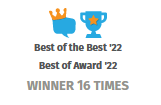












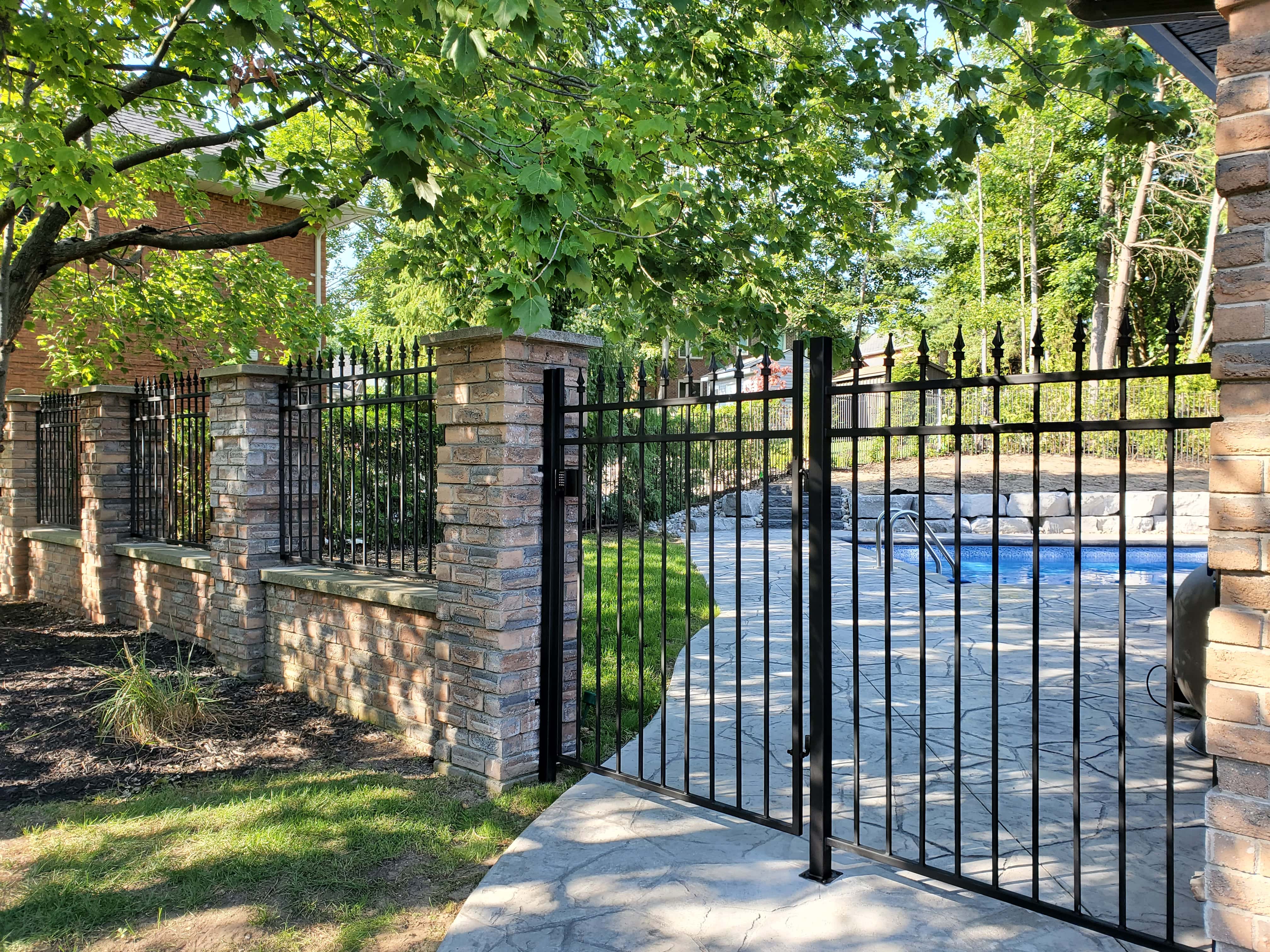

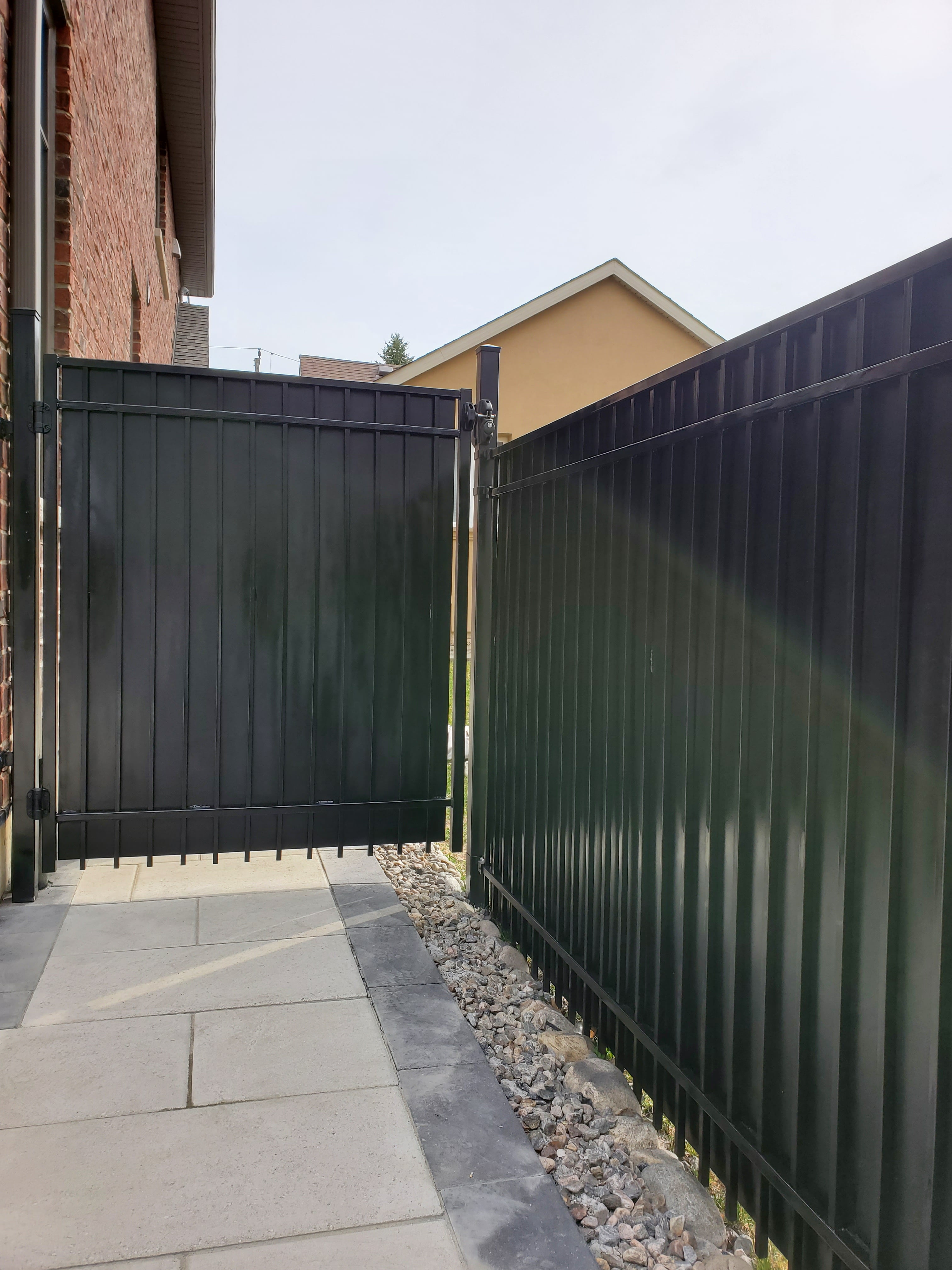













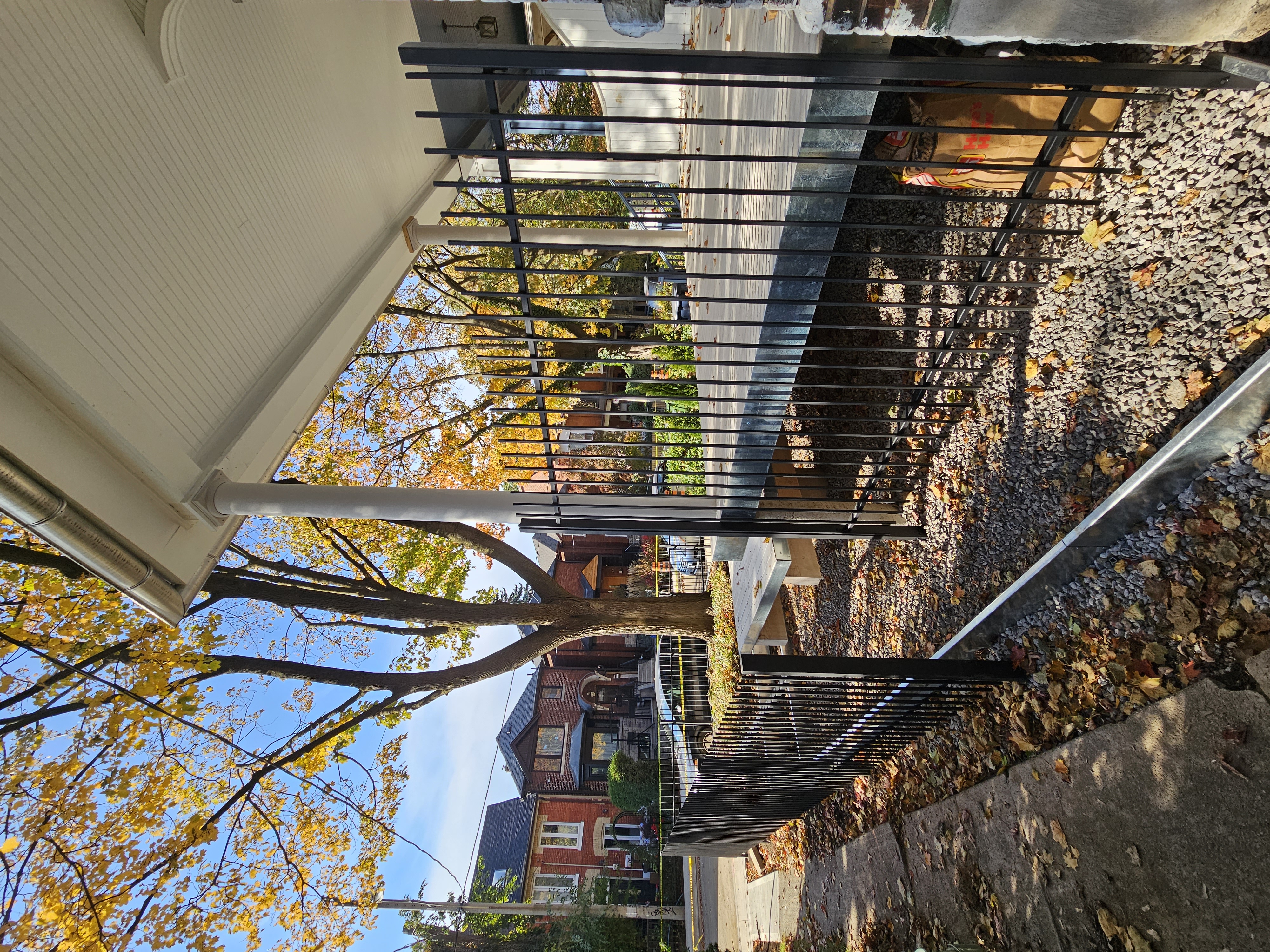

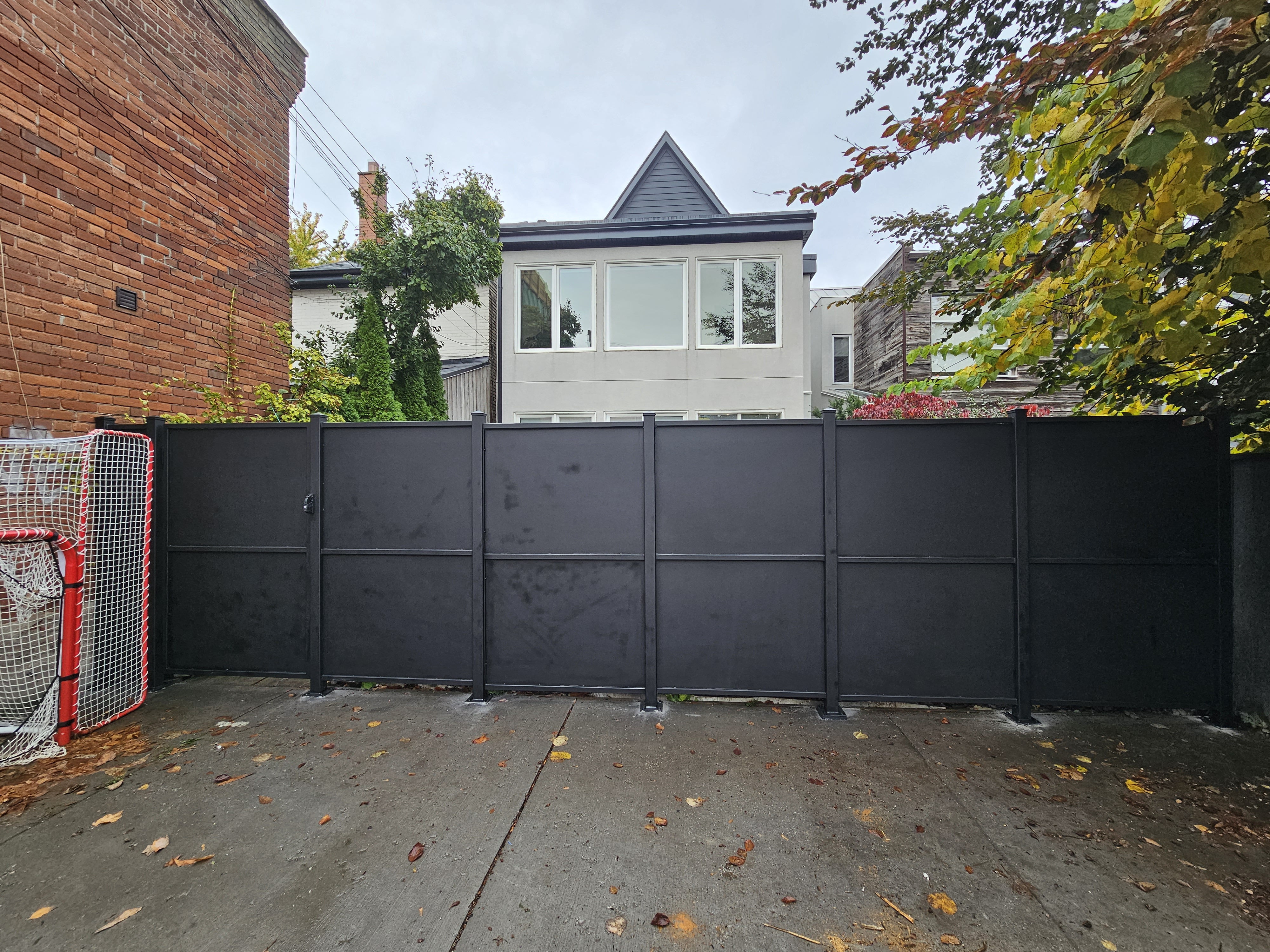
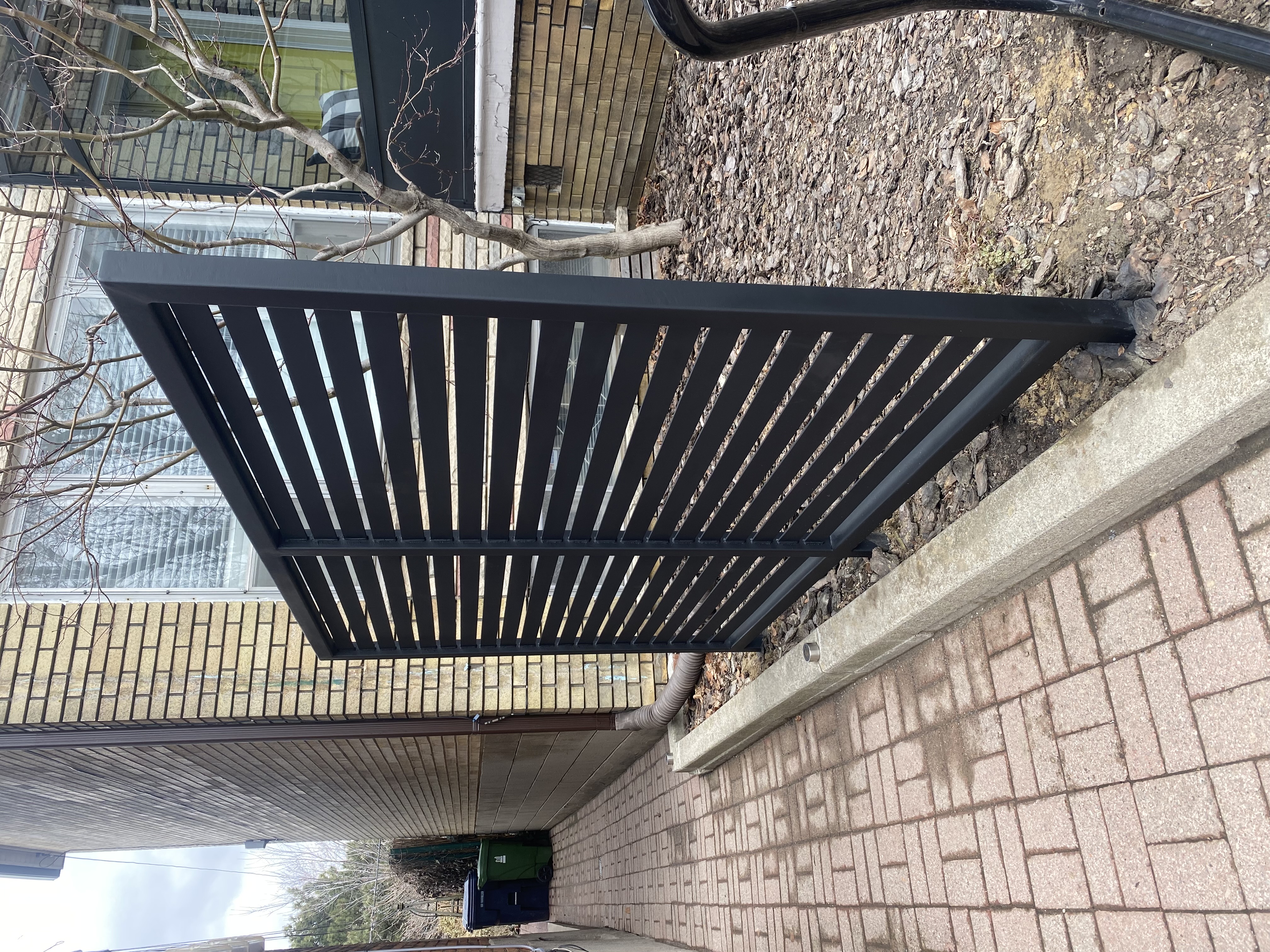
 Chat
Chat 








